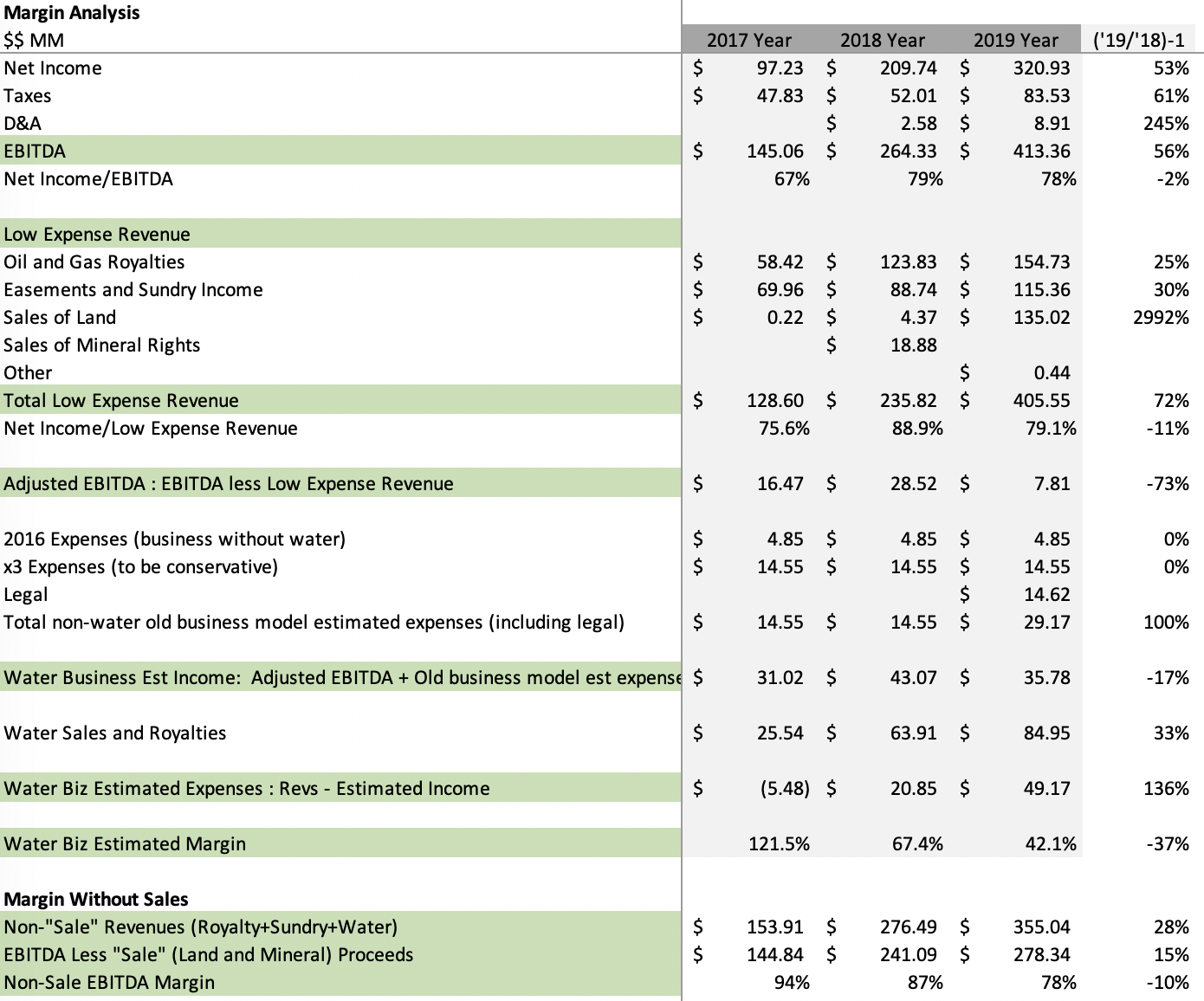https://www.sec.gov/Archives/edgar/data/97517/000009751720000017/tpl-20191231.htm
On January 22, 2020, the Committee announced that, following a deliberation process initiated in June 2019, the Committee recommended to the Trustees that the Trust convert from a trust into a Delaware C-corporation. The Committee analyzed reasons for and alternatives to conversion with support from a team of advisors to the Trust, including financial advisor Credit Suisse and outside legal counsel. The Committee’s deliberations focused particularly on tax, corporate, corporate governance, accounting and business implications of the proposed conversion.On February 20, 2020, the Trust and the Investor Group entered into the First Amendment to Settlement Agreement (the “Settlement Agreement Amendment”). The Settlement Agreement Amendment provides that the Decision Period will extend through March 6, 2020.The decision of whether to convert the Trust into a C-corporation is subject to the determination of the Trustees. The Committee recommended that, if the Trustees elect to authorize the conversion, the conversion should follow a process intended to ensure a smooth transition that would be tax-free to shareholders. As proposed, the Trust would transfer all its assets, including cash, land, Texas Pacific Water Resources (“TPWR”), and other assets, to a wholly-owned limited liability company subsidiary of the Trust (“TPL Holdco”). The Trust would then contribute all of the equity in TPL Holdco, holding all of the Trust’s assets, to a newly-created corporation (“TPL Corporation”). Shareholders of the Trust would receive an amount of shares in TPL Corporation proportional to their ownership of shares in the Trust. When this process as recommended is completed, shares of the Trust would be cancelled. Shareholders of the Trust would not need to take any action to receive the new shares in TPL Corporation.The process recommended by the Committee would require filings with the SEC and approval of the listing of the new shares by the New York Stock Exchange (the “NYSE”).
On August 8, 2019, the Trust entered into employment agreements (the “Agreements”) with Mr. Glover, its General Agent and Chief Executive Officer (the “Glover Agreement”), Mr. Packer, its General Agent and Chief Financial Officer (the “Packer Agreement”) and Mr. Parasnis, its Chief Commercial Officer and Executive Vice President (the “Parasnis Agreement”). The Agreements were effective as of July 1, 2019.Under the Agreements, Mr. Glover and Mr. Packer will each receive a base salary of $800,000 per annum and Mr. Parasnis will receive a base salary of $700,000 per annum, subject to annual review, and be eligible for an annual cash bonus of up to 300% of such base salary for achievement of specified performance targets, except that with respect to Mr. Glover and Mr. Packer, the cash bonus for the calendar year 2019 will be at least 100% of the cash bonus paid with respect to 2018, as established by the Nominating, Compensation and Governance Committee of the Trust. Until the Trust establishes an equity compensation plan, Mr. Glover, Mr. Packer and Mr. Parasnis are required to use at least 25% of their cash bonuses (net of estimated taxes) to purchase shares of the Trust’s common stock. The term of each of the Glover Agreement and the Packer Agreement ends on December 31, 2020, with automatic one (1) year extensions unless notice not to renew is given by either party at least 120 days prior to the relevant end date. The term of the Parasnis Agreement ends on December 31, 2022, with automatic one (1) year extensions unless notice not to renew is given by either party at least 120 days prior to the relevant end date. Under the Parasnis Agreement, the cash bonus for 2019 is prorated for the period of employment during such year. Additionally, Mr. Parasnis is entitled to a retention bonus in the amount of $875,000, payable in three installments on March 15, 2020 and the second and third anniversaries of the effective date of the Parasnis Agreement and is eligible for a relocation allowance in the amount of $100,000 to cover his relocation to Dallas, Texas.
Under the Agreements, Mr. Glover and Mr. Packer will each receive a base salary of $800,000 per annum and Mr. Parasnis will receive a base salary of $700,000 per annum, subject to annual review, and be eligible for an annual cash bonus of up to 300% of such base salary for achievement of specified performance targets, except that with respect to Mr. Glover and Mr. Packer, the cash bonus for the calendar year 2019 will be at least 100% of the cash bonus paid with respect to 2018, as established by the Nominating, Compensation and Governance Committee of the Trust. Until the Trust establishes an equity compensation plan, Mr. Glover, Mr. Packer and Mr. Parasnis are required to use at least 25% of their cash bonuses (net of estimated taxes) to purchase shares of the Trust’s common stock. The term of each of the Glover Agreement and the Packer Agreement ends on December 31, 2020, with automatic one (1) year extensions unless notice not to renew is given by either party at least 120 days prior to the relevant end date. The term of the Parasnis Agreement ends on December 31, 2022, with automatic one (1) year extensions unless notice not to renew is given by either party at least 120 days prior to the relevant end date. Under the Parasnis Agreement, the cash bonus for 2019 is prorated for the period of employment during such year. Additionally, Mr. Parasnis is entitled to a retention bonus in the amount of $875,000, payable in three installments on March 15, 2020 and the second and third anniversaries of the effective date of the Parasnis Agreement and is eligible for a relocation allowance in the amount of $100,000 to cover his relocation to Dallas, Texas.
